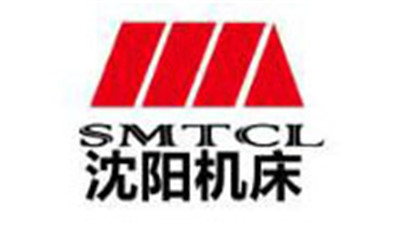Why Three Phase Transformers Are Essential for Efficient Power Distribution in Industry
Table of Contents
- Understanding the Basics of Three Phase Transformers in Industrial Applications
- Key Advantages of Three Phase Transformers for Power Distribution Efficiency
- Selecting the Right Three Phase Transformer for Your Industrial Needs
- Installation Best Practices for Optimal Performance of Three Phase Transformers
- Maintenance Tips to Ensure Longevity and Reliability of Transformers
- Future Trends in Three Phase Transformer Technology for Industrial Use
- Evaluating the Efficiency and Market Trends of Three-Phase Dry Type Transformers: Insights from Recent Industry Reports
- FAQS
- Conclusion
- Related Posts
In today’s industrial world, making sure power gets distributed efficiently is pretty much key to keeping things running smoothly and productively. One of the main players in achieving this is the Three Phase Transformer. These devices are pretty much essential—they help spread out electrical energy effectively, with minimal losses and better reliability. That’s why you’ll see them everywhere in industrial setups. As industries grow and technology advances, the need for more efficient and sustainable power distribution only gets stronger. So, having systems that can handle these demands is more important than ever.

Three Phase Transformers aren’t just about delivering power—they also help keep the whole electrical system stable. They’re pretty flexible, capable of handling different loads and providing multiple voltage levels, which makes operations smoother and a lot more adaptable. Honestly, in a time when energy efficiency isn’t just a buzzword but a must-have, it’s clear that incorporating Three Phase Transformers into industrial plants is a smart move. In this article, I’ll break down the top ten reasons why these transformers are such a big deal for efficient power distribution—covering their benefits and where they’re used in the industry.
Understanding the Basics of Three Phase Transformers in Industrial Applications
Three phase transformers play a crucial role in industrial power distribution, enabling efficient conversion and transmission of electrical energy. Unlike single-phase systems, three phase transformers utilize three alternating currents, which are phase-shifted by 120 degrees. This configuration allows for a more balanced load, reducing the risk of overheating and maximizing power output. In industrial settings where large amounts of energy are required, the use of three phase transformers helps to ensure that machines operate smoothly and consistently, vital for productivity and industrial processes.
Understanding the fundamentals of three phase transformers is essential for optimizing industrial applications. These transformers can either step-up or step-down voltage levels, making them versatile for various types of machinery and equipment. Additionally, their design minimizes losses, as they reduce the need for multiple single-phase transformers, which can lead to increased costs and reduced efficiency. By integrating three phase transformers into power systems, industries can leverage their capacity for higher power distribution, ultimately enhancing operational efficiency and reducing downtime.
Key Advantages of Three Phase Transformers for Power Distribution Efficiency
Three-phase transformers are pivotal in enhancing the efficiency of power distribution within industrial settings. One key advantage is their ability to handle higher loads with less loss. According to the U.S. Department of Energy, three-phase systems are inherently more efficient than single-phase systems, with up to 30% reduced energy losses in power transmission and distribution. This efficiency is crucial, particularly in industries that operate large machinery requiring substantial electrical power.
Moreover, three-phase transformers provide improved voltage stability and reduced voltage drop across the distribution network. A report from the International Electrotechnical Commission indicates that three-phase systems can maintain a more consistent voltage level despite varying load conditions. This stability results not only in better performance of equipment but also extends the lifespan of machinery, minimizing downtime and maintenance costs. By optimizing power distribution, three-phase transformers play a vital role in promoting sustainable energy consumption practices in the industrial sector.
Efficiency Comparison of Single Phase vs Three Phase Transformers
Three phase transformers significantly enhance power distribution efficiency in industrial applications. This chart illustrates that three phase transformers can achieve up to 95% efficiency compared to 85% for single phase transformers, highlighting the advantages of using three phase systems for optimal power distribution.
Selecting the Right Three Phase Transformer for Your Industrial Needs
When selecting the right three-phase transformer for industrial needs, it's crucial to consider factors like efficiency, voltage requirements, and operational environment. Three-phase transformers play a significant role in stabilizing power distribution systems, ensuring that equipment operates smoothly and reducing the risk of failure. Industries must evaluate their power demands carefully, as the right transformer can enhance efficiency and minimize energy losses.
Additionally, advancements in transformer technology, such as the use of high-performance transformer oils, contribute to the longevity and reliability of these essential components. In choosing a transformer, businesses should also consider the protective measures in place, such as generator circuit-breakers, which safeguard against potential faults and protect valuable assets. By assessing these elements thoughtfully, industries can select a three-phase transformer that not only meets their current needs but also prepares them for future growth.
| Transformers Type | Power Rating (kVA) | Voltage Level (kV) | Efficiency (%) | Cooling Type | Typical Applications |
|---|---|---|---|---|---|
| Delta-Wye Transformer | 500 | 11/0.415 | 98.5 | Oil-immersed | Manufacturing Facilities |
| Dry-Type Transformer | 100 | 0.415 | 97.0 | Air-cooled | Commercial Buildings |
| Step-Up Transformer | 2000 | 33/11 | 99.0 | Oil-immersed | Power Generation |
| Isolation Transformer | 150 | 0.415/0.415 | 95.0 | Dry-type | Industrial Equipment |
Installation Best Practices for Optimal Performance of Three Phase Transformers
When it comes to the installation of three-phase transformers, adhering to best practices is crucial for ensuring optimal performance and efficiency in power distribution. According to a report from the International Energy Agency (IEA), industrial facilities that properly implement installation techniques can enhance operational efficiency by up to 15%. Proper alignment and leveling of the transformer are vital to prevent undue stress on the components and to maintain the reliability of the power supply.
Another important aspect is the selection of suitable protection devices. The National Electrical Manufacturers Association (NEMA) states that integrating the right surge protection can lead to a 20% reduction in maintenance costs over the lifecycle of the transformer. Additionally, adequate ventilation and thermal management during installation help in prolonging the lifespan of the equipment, preventing overheating and potential failures.
By following these recommended best practices, industries can ensure their three-phase transformers operate at peak efficiency, thereby significantly enhancing their overall productivity and reducing energy expenses.
Maintenance Tips to Ensure Longevity and Reliability of Transformers
Three-phase transformers are crucial for efficient power distribution in industrial settings, but ensuring their longevity and reliability is equally important. Regular maintenance plays a vital role in achieving this goal. Industry reports indicate that proper inspection and upkeep can prevent up to 80% of transformer failures. For instance, routine thermal imaging and insulation testing can identify potential issues before they lead to significant downtime, allowing for timely repairs that save both time and resources.

As noted in recent maintenance initiatives, companies are increasingly prioritizing service reliability, especially during peak usage periods such as summer. These efforts often include comprehensive inspections of electrical systems, which have shown to enhance overall system performance and reliability. According to maintenance experts, adopting a proactive maintenance strategy can lead to a 20-30% reduction in operational costs while also extending the lifespan of critical equipment like transformers. By focusing on these maintenance strategies, industries can ensure that their power distribution systems remain efficient and reliable, ultimately supporting their operational goals and customer satisfaction.
Future Trends in Three Phase Transformer Technology for Industrial Use
The three-phase transformer technology is experiencing significant advancements, particularly driven by the integration of wide bandgap semiconductor materials like silicon carbide (SiC) and gallium nitride (GaN). These materials offer superior performance characteristics, enabling transformers to operate efficiently at high voltages and frequencies. As industries face increasing energy demands, the use of SiC and GaN in power electronics presents an opportunity to enhance overall system efficiency and reliability.
By 2025, the transformer market is expected to reach a valuation of approximately $332.4 billion, with projections indicating it could ascend to $613.1 billion by 2035. This remarkable growth underscores the importance of upgrading transformer technology in industrial applications. The integration of advanced materials not only facilitates higher power densities but also reduces heat losses, ultimately contributing to more sustainable operations. Innovations in three-phase transformer designs will be critical in meeting the future energy needs of industries while helping to achieve regulatory emissions targets.

Evaluating the Efficiency and Market Trends of Three-Phase Dry Type Transformers: Insights from Recent Industry Reports
The efficiency and market trends of three-phase dry type transformers are gaining notable attention as industries pivot towards sustainable energy solutions. Recent industry reports indicate that the adoption of these transformers is on the rise, with a projected compound annual growth rate (CAGR) of 6.5% over the next five years, driven particularly by sectors such as renewable energy and complex CNC machinery. As these applications require high reliability and minimal maintenance, three-phase dry type transformers stand out for their capacity to handle fluctuating loads while providing enhanced safety features, especially in environments prone to moisture or contaminants.
In particular, the suitability of three-phase dry type transformers for applications such as servo driver power supply, wind power generation, and photovoltaic systems cannot be overstated. Recent market analyses reveal that power generation from wind and solar sources is expected to grow significantly, with wind power capacity anticipated to double by 2025. This surge highlights the critical role these transformers will play in optimizing energy efficiency and maintaining power quality in variable generation settings. Additionally, in the manufacturing sector, their application in CNC machine tools exemplifies the need for robust power solutions that not only support advanced technologies but also facilitate energy savings and operational efficiencies.
As industries increasingly focus on reducing carbon footprints and enhancing energy performance, the demand for three-phase dry type transformers continues to escalate. Reports from the International Energy Agency (IEA) suggest that energy-efficient technologies such as these transformers could reduce energy consumption in industrial applications by up to 30%. This trend is reshaping the market landscape, urging manufacturers and energy companies alike to invest in upgraded transformer technologies that align with current environmental and operational demands.
FAQS
: A three-phase transformer is a device that converts electrical energy using three alternating currents that are phase-shifted by 120 degrees, allowing for efficient power distribution in industrial applications.
They help in balancing the load, reducing the risk of overheating, maximizing power output, and ensuring that machines operate smoothly and consistently, which is vital for productivity.
Three-phase transformers are inherently more efficient, with up to 30% reduced energy losses in power transmission and distribution, making them suitable for handling higher loads with less loss.
They maintain a more consistent voltage level despite varying load conditions, resulting in better performance of equipment and extending machinery lifespan.
Proper alignment, selection of suitable protection devices, adequate ventilation, and thermal management are crucial for optimal performance and efficiency.
Proper installation can enhance operational efficiency by up to 15%, reducing stress on components and maintaining the reliability of the power supply.
Integrating the right surge protection can lead to a 20% reduction in maintenance costs over the transformer’s lifecycle.
Adequate thermal management helps prolong the lifespan of the equipment by preventing overheating and potential failures.
They promote sustainable energy consumption practices in the industrial sector by optimizing power distribution and reducing downtime.
Yes, they can step-up or step-down voltage levels, making them versatile for various types of machinery and equipment.
Conclusion
Three Phase Transformers play a crucial role in industrial power distribution, offering enhanced efficiency and reliability. Understanding the basics of these transformers is vital for industries seeking to optimize their electrical systems. Key advantages include reduced energy losses and improved load management, making them indispensable for industrial applications. Selecting the right Three Phase Transformer tailored to specific needs is essential to maximize performance, while adhering to installation best practices ensures optimal operation.
Furthermore, regular maintenance is necessary to prolong the lifespan and reliability of these transformers. As technology evolves, future trends in Three Phase Transformer design promise even greater efficiencies and capabilities, aligning with the innovative spirit of companies like Dezhou Xinping Electronics Co., Ltd., a national high-tech enterprise dedicated to manufacturing precision electronic transformers since 2001.
Related Posts
-

Understanding the Importance of Three Phase Transformers in Modern Energy Systems
-

Unlocking Efficiency: How Three Phase Transformers Revolutionize Industrial Power Systems
-

Unlocking the Power of Sq Inductive Coil Sq: Understanding Its Role in Modern Technology
-

Transforming Industry Insights at the 2025 China Import and Export Fair Featuring 240 To 12 Volt Transformers
-

How to Select the Best Voltage Regulator Transformer for Your Needs
-

5 Amazing Benefits of Step Up Transformer 110v To 220v You Need to Know
Blog Tags:


















